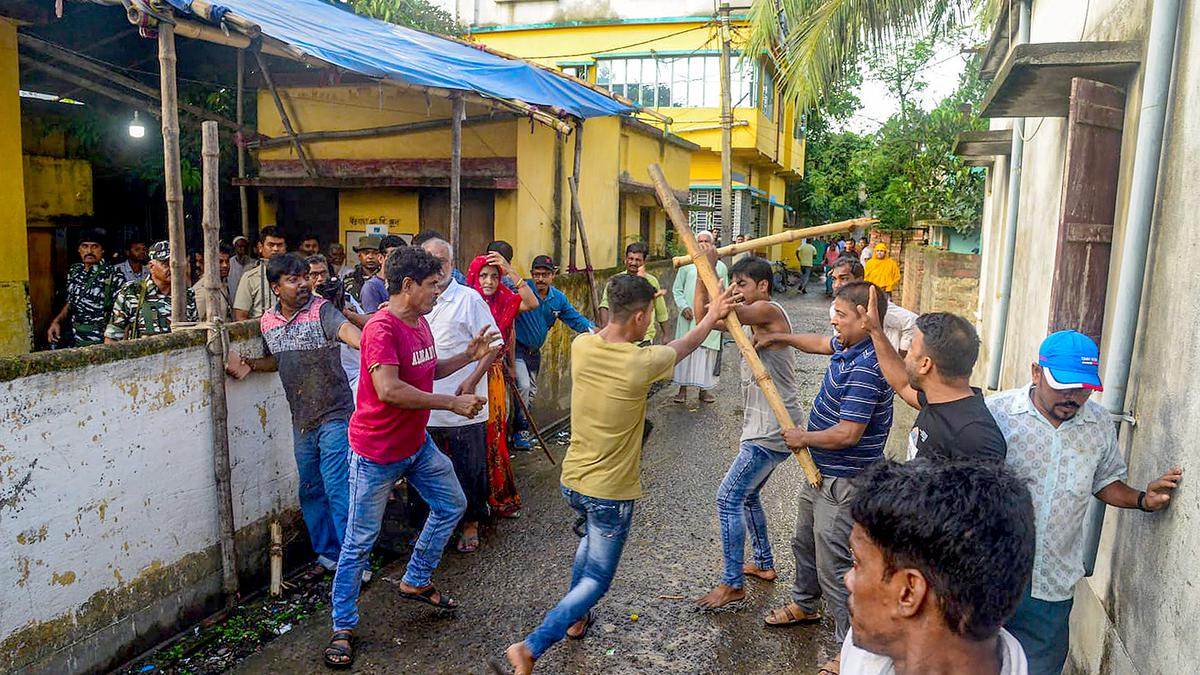
The advent of franchisee politics in West Bengal Premium
The Hindu
Bhattacharya's paper examines the 'franchisee politics' of West Bengal, tracing its roots to the left's agrarian reforms and its evolution under the Trinamool Congress. It argues that this model, which fuses business with politics, has limited the BJP's expansion in the State. It also explains how the BJP's polarisation tactics have failed to consolidate Hindu votes.
Bhattacharyya, Dwaipayan (2023). Of Conflict and Collaboration: Mamata Banerjee and the Making of ‘Franchisee Politics’ in West Bengal, Economic and Political Review, September 9, 2023, VOL LVIII NO 36.
Political violence is a routine feature of elections in West Bengal. While poll-related violence is not unique to Bengal, in no other State is it so deadly. In Bengal, it consumed 70 lives in 2003, 30 each in 2008 and 2013, and 50 in 2018. What is it about West Bengal’s political system that demands such relentless bloodshed? This paper by Dwaipayan Bhattacharya seeks to answer this question by mapping the structures of political power in a context of evolving political competition.
In Bengal, “partisan violence” — violence perpetrated in the name of a party by individuals who identify with said political party — trumps all other forms of social violence, including communal violence. In other words, it assumes an “identitarian significance in the State”. The conventional liberal view of “democratic competition treats party affiliation as voluntary, unlike one’s ascriptive ‘belonging’ to a race, caste or ethnic group.” But in Bengal, “one belongs to the party”.
Such a sense of belonging remained stable for more than three decades of the left front rule. But once it ended, many who ‘belonged’ to the left migrated to the new incumbent, the Trinamool Congress. There was more churn with the advent of the Bharatiya Janata Party (BJP), wherein a two-way traffic opened between the Trinamool Congress and the BJP, of not just party workers but also of leaders. But even in this scenario, where party loyalties seemed to have eased up somewhat, “people sacrificed their lives in the name of their parties”. Why?
Bhattacharya’s explanation begins with the nature of the left’s governmental intervention in West Bengal. The State had witnessed a series of peasant movements in the late colonial and early post-colonial decades “against the landlords in demand for land to the tiller and a just share of produce for the cultivating tenants”. This set the stage for the left front’s agrarian and land reforms at the turn of the 1980s. However, these new pro-poor laws were not easy to implement. Neither the police nor the civil administration could do it.
It was in this scenario that the left front “instituted elected panchayats at the village, block, and district levels for the first time in the country to engage the majority poor in the conduct of governmental matters.” They did it by mobilising the members of the Communist Party of India (Marxist) or CPM to make use of violence or the threat of violence to implement the pro-poor laws. Local CPM leaders, most of them school teachers, acted as the rural poor’s interface with the State machinery. This helped the CPM win respect and authority and establish itself as a hegemonic force.
But after the initial burst of pro-poor reforms, the CPM eased up as it “prioritised social stability and re-election and turned itself into a managerial outfit”. With land reforms halted and agriculture in stagnation mode, the State economy suffered, sparking popular discontent. Hegemony gave way to “dominance” as the party sought to quell the “unruly” who could endanger social peace. The party thus used force to tighten its control over society and maintain status quo until a series of blunders in its attempt to obtain land for industry resulted in its rejection by the majority. According to Bhattacharya, “In its moments of triumph as well as of defeat, by placing the party at the centre of the lifeworld and livelihood of the rural folks, the CPI(M) created a form or site for popular politics that one may call ‘party society’”.













